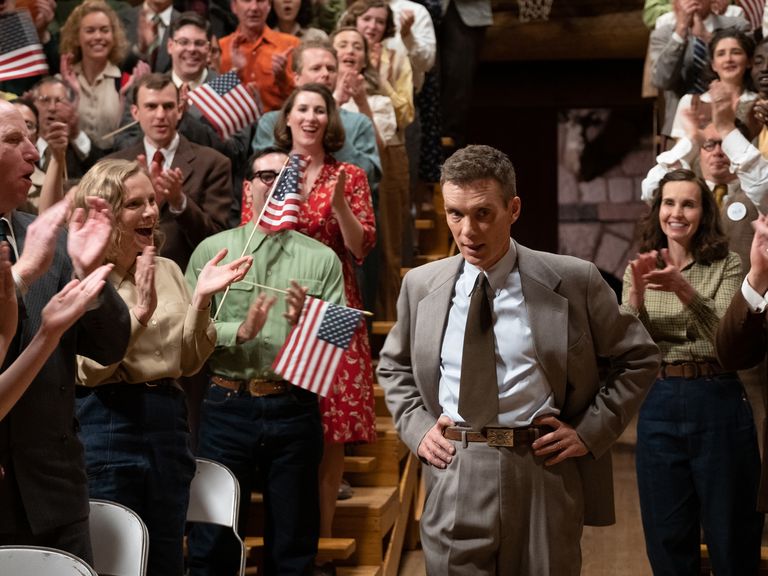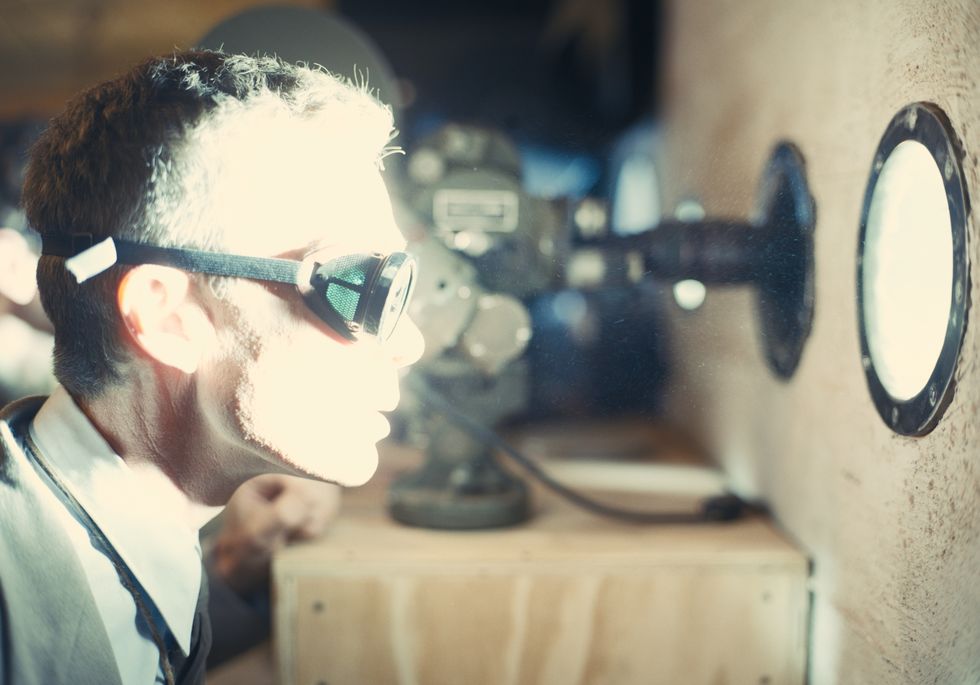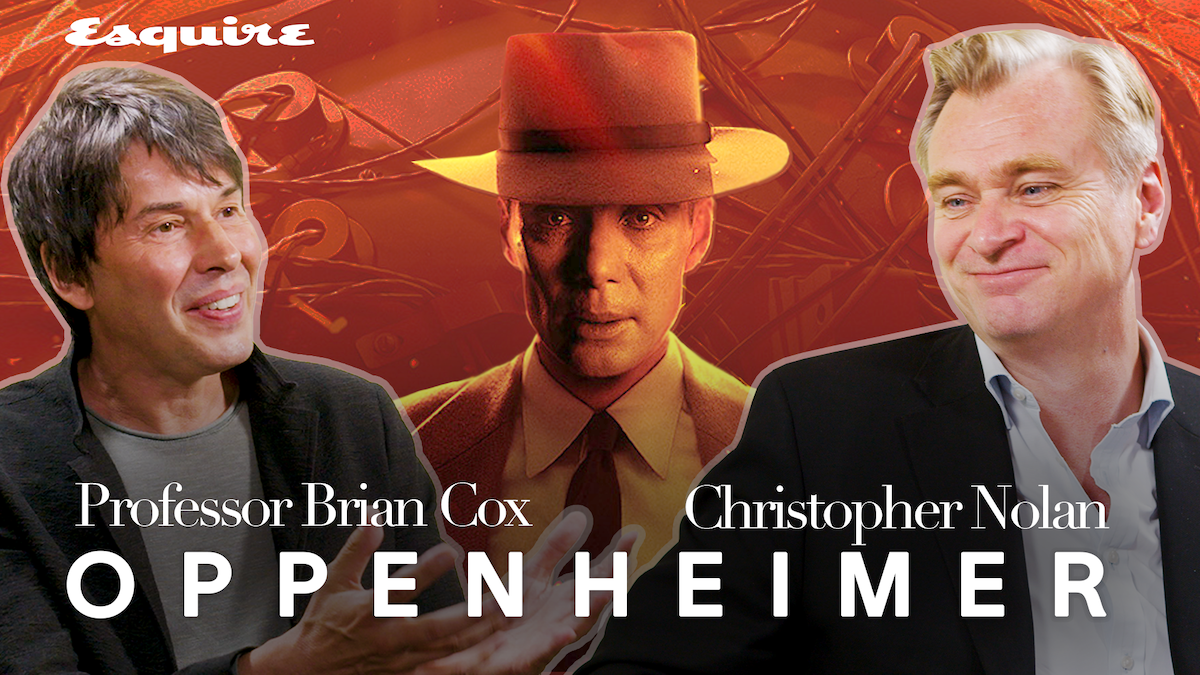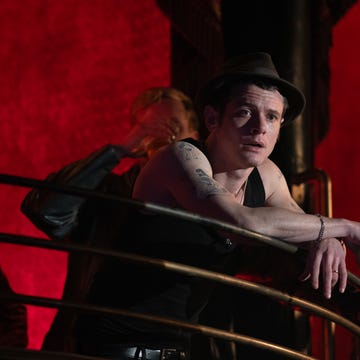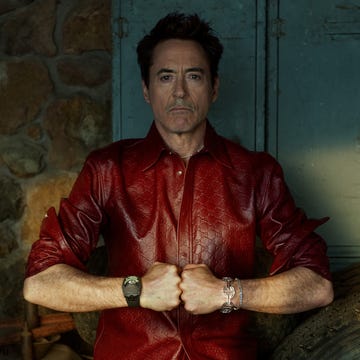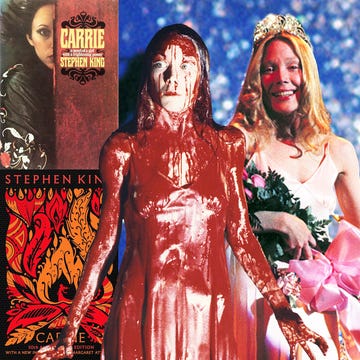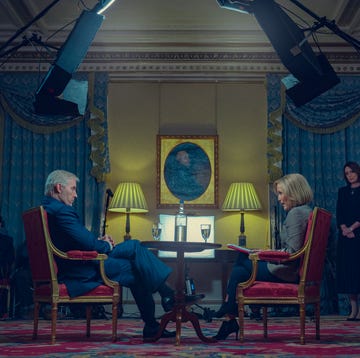It was the scream that really stayed with me. In the week or so since I saw Oppenheimer, I’ve mentally sifted through so many of the brain-bending images which contributed to this movie’s hype. Christopher Nolan had blown up half of New Mexico apparently, and managed to turn the movements of atoms and quantum mechanics into IMAX-worthy visuals.
And, you know, he definitely did. But it’s the scream that really got me. That whole scene at Los Alamos, when word has come back that the bomb has been successfully dropped on Hiroshima, is the heart of Oppenheimer.
We find out the news the same way Oppenheimer (played by Cillian Murphy) does: by overhearing President Truman telling the world on the wireless. That statement has a severe, almost preacher-like intensity:
“With this bomb we have now added a new and revolutionary increase in destruction to supplement the growing power of our armed forces. In their present form these bombs are now in production and even more powerful forms are in development.
“It is an atomic bomb. It is a harnessing of the basic power of the universe. The force from which the sun draws its power has been loosed against those who brought war to the Far East.”
A rumbling sound, which we’ve heard throughout the film’s key scenes, starts. So far it’s been the sound of progress, but now it is oppressive and pummelling. It’s the noise of eager feet stamping on wooden benches in the gymnasium at Los Alamos. Young people are packed into the frame, from floor to ceiling, all the way up to the basketball hoop. Oppenheimer is cheered to his lectern. It could be a high school pep rally.
Quiet falls. The bomb has been dropped on the Japanese, Oppenheimer announces. Then, in a roar: “And I don’t think they liked it!”
The room explodes. The rumbling of feet continues. Finally, it’s clear that that sound was always drawing him toward this moment, from past and future. This more than the Trinity test is the moment when the bomb he was instrumental in creating becomes a physical fact, even if there are no shots of Hiroshima itself. The room shakes. We’re right inside Oppenheimer’s moment of fracture. Suddenly the cheering hordes look disgusting, viscerally reprehensible.
But then the stamping falls away, and there’s that scream. For all the flak Nolan gets about his unintelligible sound mixing (you could easily have swapped that Godfather gag in Barbie for a Ken explaining that actually the sound design in Tenet is deliberately confusing), this moment of acuity pulls Oppenheimer together. Oppenheimer himself is several thousand miles away, across the Pacific, standing in the centre of Hiroshima as Little Boy detonates. There’s a flash of light. Oppenheimer looks to the crowd and sees one girl, first cheering, then shrieking in pain. She’s only there for a moment, but long enough for us to register in the blinding, stark light that the skin on her face is shredded. She is played by Nolan’s daughter Flora.
“We needed someone to do that small part of a somewhat experimental and spontaneous sequence,” Nolan told the Telegraph. “So it was wonderful to just have her sort of roll with it.”
The way that Burn Victim – Nolan Jr.’s character’s official name – turns away and covers her face gave me flashbacks to a similarly nightmarish sequence in the BBC’s seminal 1984 nuclear apocalypse movie Threads. As megatons of nuclear weapons hit Sheffield, people caught in the open turn away just like her, as milk bottles melt and a baby in a pram bursts into flames. That used silence extraordinarily too, like the whole world was holding its breath as this Biblical fire scorches across the land, before the shockwave blows apart every atom of normal life.
In the hall, Oppenheimer goes to leave. His foot lands in something brittle, grey, hollow. He looks down and sees an incinerated human corpse, curled up in fear and defeat like a plaster cast of an ancient citizen of Pompeii. Ash falls through the gymnasium. Dazed, Oppenheimer makes it out of the room and comes across a young couple snogging. Outside, a colleague who’s gone a bit too hard at the party vomits.
But through this gauze of horror – what he has just done to Hiroshima, to 70,000 people, to the world at large – the fabric of Oppenheimer’s own time and place implodes. The young couple cower in terror, not sure what’s happening. The colleague’s puke jabs at what Oppenheimer must know waits for survivors in Hiroshima: radiation poisoning, and with it vomiting, fatigue, disorientation, muscle pain, internal bleeding, death.
Calling this whole sequence “somewhat experimental” is an understatement. There’s been some criticism of the decision not to show the effects of the bomb on Hiroshima or Nagasaki in Oppenheimer, and if this were a broader historical film, that would be a failing. But Nolan cleaves so closely to Oppenheimer’s viewpoint – to the extent that the script was written in the first person, and Murphy is in nearly every frame of a three-hour movie – that to leap out of it to go to Japan would jar.
And this isn’t a movie which uses spectacle for its own sake. Instead, Nolan shows the effects of the bomb as Oppenheimer intuits them, and the dreamlike overflow of terror and reality, one into the other and back again. It is, immediately, a top-tier Nolan sequence joining Leo DiCaprio folding Paris in half in Inception or the gut-wrenching tension of the oil spill explosion in Dunkirk. I keep hearing that scream.
